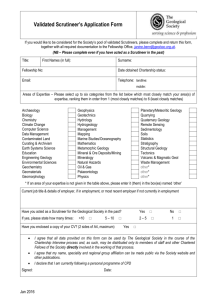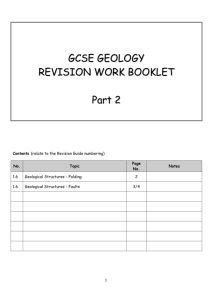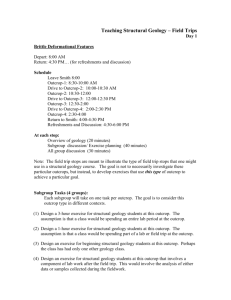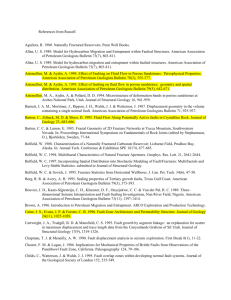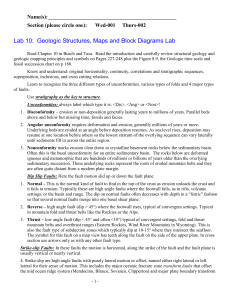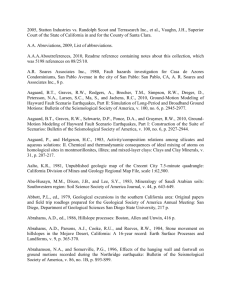Formalization of fold and fault concepts in a structural
advertisement
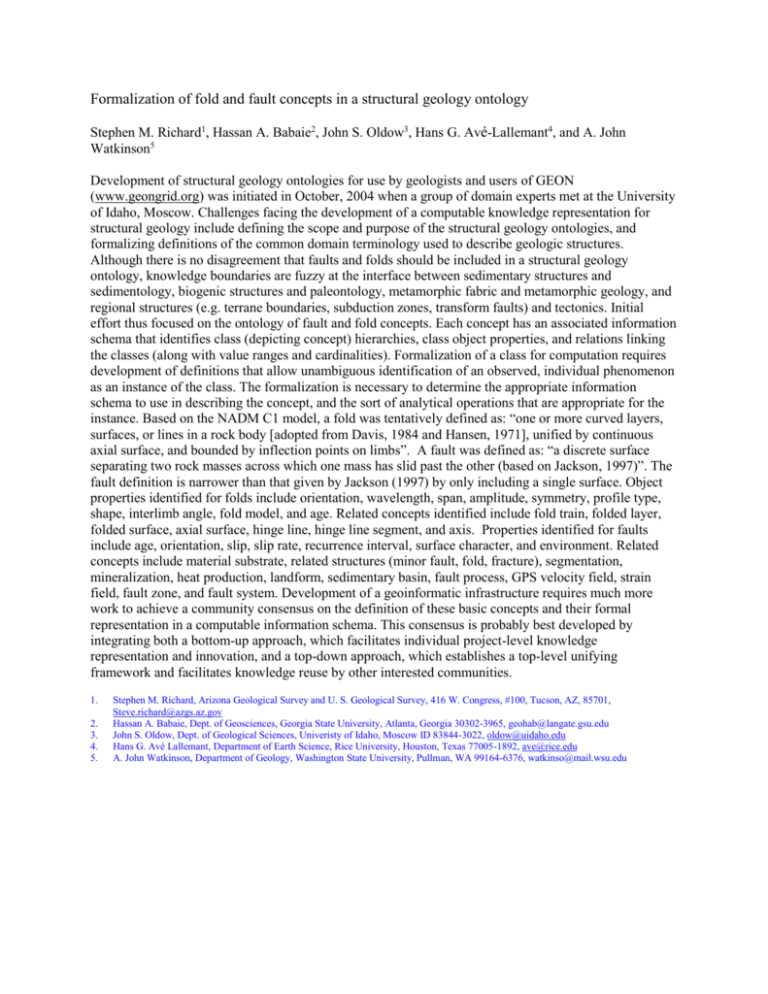
Formalization of fold and fault concepts in a structural geology ontology Stephen M. Richard1, Hassan A. Babaie2, John S. Oldow3, Hans G. Avé-Lallemant4, and A. John Watkinson5 Development of structural geology ontologies for use by geologists and users of GEON (www.geongrid.org) was initiated in October, 2004 when a group of domain experts met at the University of Idaho, Moscow. Challenges facing the development of a computable knowledge representation for structural geology include defining the scope and purpose of the structural geology ontologies, and formalizing definitions of the common domain terminology used to describe geologic structures. Although there is no disagreement that faults and folds should be included in a structural geology ontology, knowledge boundaries are fuzzy at the interface between sedimentary structures and sedimentology, biogenic structures and paleontology, metamorphic fabric and metamorphic geology, and regional structures (e.g. terrane boundaries, subduction zones, transform faults) and tectonics. Initial effort thus focused on the ontology of fault and fold concepts. Each concept has an associated information schema that identifies class (depicting concept) hierarchies, class object properties, and relations linking the classes (along with value ranges and cardinalities). Formalization of a class for computation requires development of definitions that allow unambiguous identification of an observed, individual phenomenon as an instance of the class. The formalization is necessary to determine the appropriate information schema to use in describing the concept, and the sort of analytical operations that are appropriate for the instance. Based on the NADM C1 model, a fold was tentatively defined as: “one or more curved layers, surfaces, or lines in a rock body [adopted from Davis, 1984 and Hansen, 1971], unified by continuous axial surface, and bounded by inflection points on limbs”. A fault was defined as: “a discrete surface separating two rock masses across which one mass has slid past the other (based on Jackson, 1997)”. The fault definition is narrower than that given by Jackson (1997) by only including a single surface. Object properties identified for folds include orientation, wavelength, span, amplitude, symmetry, profile type, shape, interlimb angle, fold model, and age. Related concepts identified include fold train, folded layer, folded surface, axial surface, hinge line, hinge line segment, and axis. Properties identified for faults include age, orientation, slip, slip rate, recurrence interval, surface character, and environment. Related concepts include material substrate, related structures (minor fault, fold, fracture), segmentation, mineralization, heat production, landform, sedimentary basin, fault process, GPS velocity field, strain field, fault zone, and fault system. Development of a geoinformatic infrastructure requires much more work to achieve a community consensus on the definition of these basic concepts and their formal representation in a computable information schema. This consensus is probably best developed by integrating both a bottom-up approach, which facilitates individual project-level knowledge representation and innovation, and a top-down approach, which establishes a top-level unifying framework and facilitates knowledge reuse by other interested communities. 1. 2. 3. 4. 5. Stephen M. Richard, Arizona Geological Survey and U. S. Geological Survey, 416 W. Congress, #100, Tucson, AZ, 85701, Steve.richard@azgs.az.gov Hassan A. Babaie, Dept. of Geosciences, Georgia State University, Atlanta, Georgia 30302-3965, geohab@langate.gsu.edu John S. Oldow, Dept. of Geological Sciences, Univeristy of Idaho, Moscow ID 83844-3022, oldow@uidaho.edu Hans G. Avé Lallemant, Department of Earth Science, Rice University, Houston, Texas 77005-1892, ave@rice.edu A. John Watkinson, Department of Geology, Washington State University, Pullman, WA 99164-6376, watkinso@mail.wsu.edu



